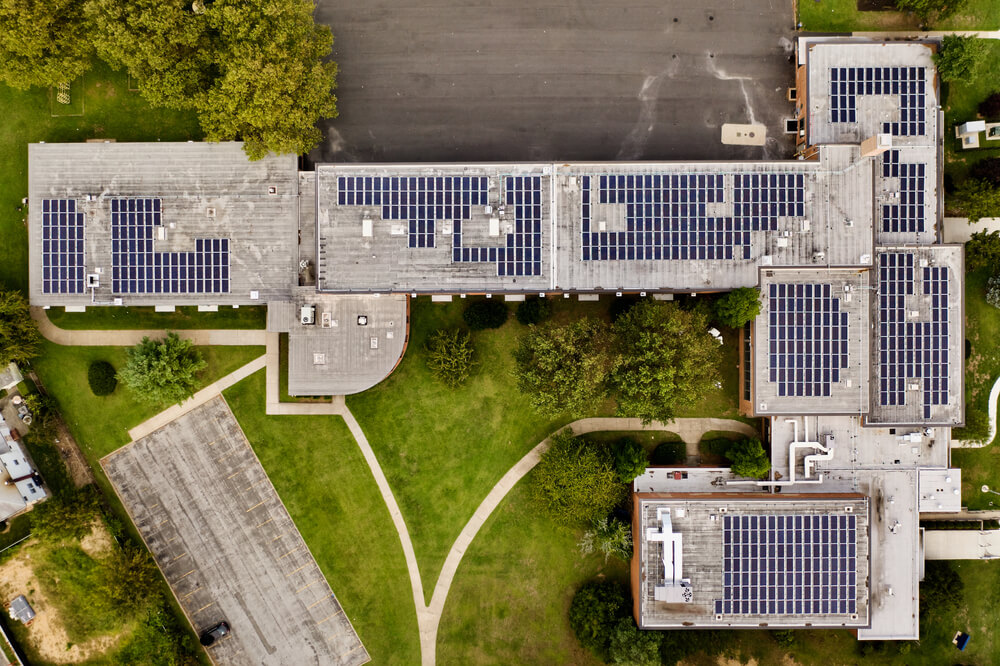ImpactAlpha, Oct. 31 – The municipal bond market has been called the original impact investment asset class, a source of capital for water, housing, parks, libraries, transit and other essential infrastructure.
But laced through with historical biases, the U.S. municipal bond market has often been a source of racial harms as well. The Robert Wood Johnson Foundation has embarked on a broad effort to reshape the nearly $4 trillion muni market around health equity and racial justice.
“When we started looking around for what were the big veins, the big pools of capital, that weren’t fully optimized for investing in health, the municipal finance market really showed up very strong,” Kimberlee Cornett, the foundation’s senior director of impact investing, says on ImpactAlpha’s Agents of Impact podcast.
Health equity has long been central to the work of the $13 billion foundation, which takes a comprehensive view. Access to clean water, affordable housing, high-quality schools, parks and open spaces, job opportunities and other community conditions all contribute to health and well-being, says Cornett’s colleague, Zoila Jennings.
“We’re really trying to look at the entire spectrum of municipal bonds, not just at the point of capital issuance,” says Jennings. “What does it look like to integrate racial equity within the municipal bond industry?” That includes revamping community involvement, including voting, that determine the projects to be financed, closely monitoring the use of proceeds, and evaluating the actual impacts, including on reducing racial wealth gaps.
“How can we intentionally go into those issues and reframe them and see if there are certain levers that we can pull that help reconnect communities back to opportunity, particularly structurally excluded communities and populations of color?” Jennings asks.
Impact narrative
The foundation’s strategy brings together issuers – the cities and other agencies that tap the muni market for financing – with ratings agencies and activist financial advisors such as Adasina Social Capital and fiscal justice research groups like Activest.
With a separate $4 million grant, Robert Wood Johnson is backing the Public Finance Initiative and the National League of Cities to develop the “Bond Markets and Racial Equity Project.” Public Finance Initiative is readying a framework for issuers, as well case studies of efforts in cities like Dallas, Denver, Chicago and Chandler, Arizona. An early project was the white paper, “Leveraging Municipal Bond Markets to Disrupt Systemic Inequalities.”
As important as the foundation’s funding has been its convening and signaling power, said Lourdes Germán, executive director of the Public Finance Initiative.
“I think the vital role that they’re playing in the market is actually showing that there is an impact narrative that issuers need to be cognizant of if they want to appeal to every investor,” Germán told ImpactAlpha. Issuers have typically considered social and racial equity issues through a risk lens, if they considered them at all.
The foundation, she says, “is making such a profound statement saying, ‘By the way, there’s an impact story we care about, too.’ They’re pushing issuers to think differently.”
Black tax
Racial equity shows up in munis in a variety of ways. Researchers have documented the disproportionate burden placed on communities of color through traffic fines and other fees, which for many communities make up the revenue streams to pay back bonds.
Another avenue of inquiry is in differentials in cities’ price of capital, as determined by investor interest in muni bond issues from communities with different demographic profiles. In many cases the perception of risk is higher than the actual risk, a phenomenon that has been called the “Black tax” (see, in particular, “The Bonds of Inequality,” by Destin Jenkins).
“We really want to understand how severe is that and why that is occurring,” Cornett says in the podcast. “Because that very well may be both a remnant of historical exclusion of those communities and a lingering perception of risk that simply has to be – we use the word ‘eviscerated’ – eviscerated from the capital markets.”
“When we look at a lot of communities that have faced structural barriers to accessing capital, it probably shouldn’t surprise us that those bonds aren’t as attractive to investors as other, higher- capacity places,” she continues.
“This is the primary tool through which cities and towns fund the things that make them more prosperous, that make them more resilient to climate change. And so if you are one of those disinvested communities, how do you get in the game if your primary tool is less attractive to the capital markets?” she says. “We don’t know the answer to that question. But we do know that there is unequal access to this market for some places, and some of those roots go very far back to a racialized America that we’re still recovering from.”
One promising approach is the creation of state-level “bond banks” that serve to diversify the set of issuers and equalize risk and minimize race-based credit analysis, “so jurisdictions that are often seen as higher credit risk or have higher pricing get the benefit of funding in the aggregate,” Jennings says.
Historic opportunity
Munis are a core part of the portfolios of nearly every diversified investor. One avenue of change is for investors to ask their advisors and financial institutions to press issuers for more details about the use of proceeds, such as “What is the use of proceeds? What is this bond paying for? And who is benefiting from that?” Cornett suggests. “Is it paying for housing in an area that is disinvested of a solid supply of affordable housing? Or is it going to a majority white neighborhood that already has many of those stability benefits?”
Municipal bonds in some cases are necessary because of the absence of federal funds that might have been available for infrastructure and other projects. The enactment this year of the bipartisan infrastructure bill and the Inflation Reduction Act has created an historic opportunity to bridge some of those gaps. The project is looking closely, for example, at the long-running water crisis in Jackson, Miss.
“We do not want to burden communities with higher water charges in a system that is already not working efficiently,” Jennings said. “how do we think about other ways, besides debt, that can still help with infrastructure improvements?”
But when federal funding is gone, munis will remain.
“The municipal markets are the tool that we have. They’re the tool that we had 50 years ago. And they’re likely to be a mainstay of the capital markets in the future,” Cornett says. “Trying to find the way forward in terms of how to make that primary tool, for communities of all sizes, equitable, and to provide investors with visibility into what they’re buying – that’s our bread and butter.”
Follow all of ImpactAlpha’s Muni Impact coverage, made possible with support from the Robert Wood Johnson Foundation.











